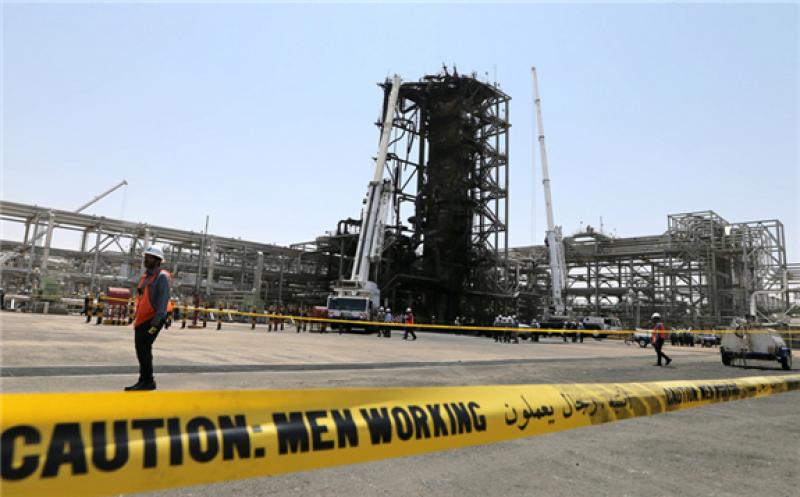 Workers are seen at the damaged site of Saudi Aramco oil facility in Khurais, Saudi Arabia, September 20, 2019 © Reuters / Hamad l Mohammed
Workers are seen at the damaged site of Saudi Aramco oil facility in Khurais, Saudi Arabia, September 20, 2019 © Reuters / Hamad l Mohammed Aramco is in urgent talks with equipment manufacturers and service providers and is willing to pay premium rates for faster delivery and installation. Still, the repairs work could last months because the equipment has to yet be manufactured, delivered and installed, and this could take as long as a year, the WSJ’s Summer Said noted, quoting Saudi officials.
The report suggests initial expectations by Aramco may have been overoptimistic. As a result, we could see another spike in prices soon: the attacks on Khurais and Abqaiq took off a combined 5.7 million bpd from global oil markets.
Last week, Energy Minister Abdulaziz bin Salman tried to reassure traders as he told media more than half of the lost production had been restored. By the end of September, bin Salman said, Saudi Arabia would have 11 million bpd in production capacity and by the end of November, it would have 12 million bpd.
Yet, according to the Wall Street Journal’s sources, this is not likely to be the case as the equipment that will replace the one destroyed by the attacks would have to be made to measure, and this takes time.
Bloomberg estimated earlier this month that Saudi Arabia has about 50 million barrels of oil in storage at home plus another 80 million barrels stored abroad. This will be enough to keep its exports going at regular rates, but some expect a supply gap to open up late next month.
Uncertainty is growing as a result of conflicting reports: first media reported Saudi Arabia had asked Iraq for light crude to insulate itself from a supply gap, and then Riyadh said it had never done that. Now, the official position continues to be that repairs will take a few weeks, with the WSJ report suggesting that this might not be the case.
Prices have remained relatively indifferent to the latest updates, although both Brent and WTI were up by more than a percentage point from Friday at the time of writing.